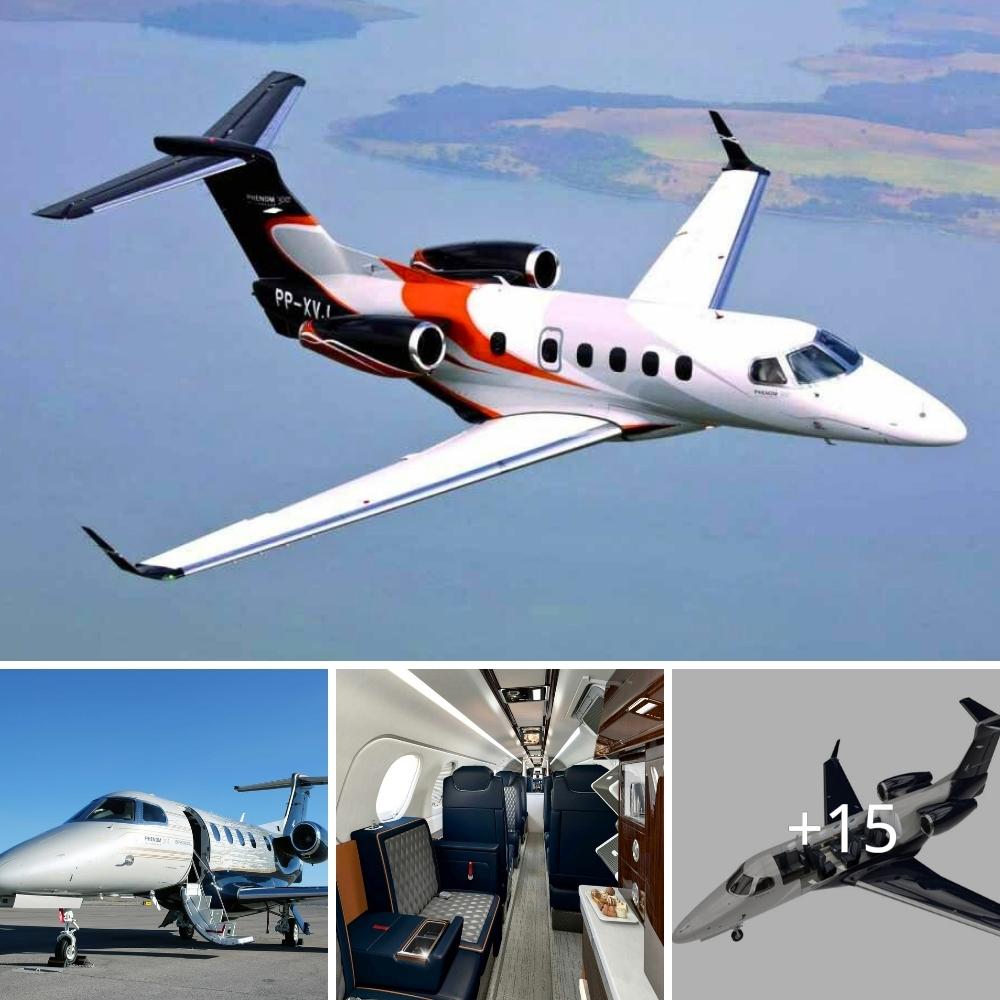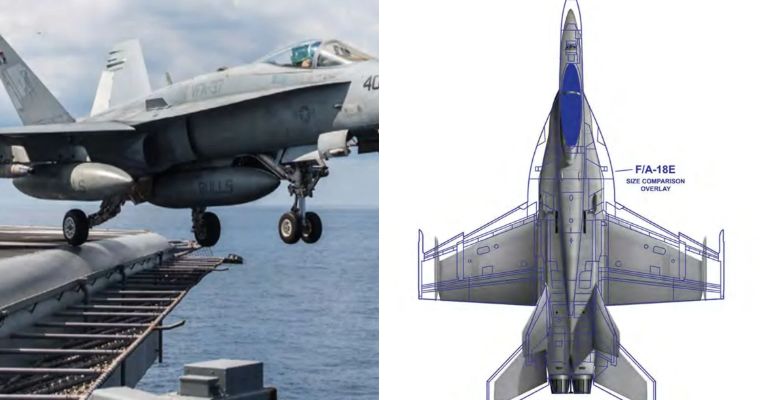Here’s a rundown of some of the latest aircraft offerings, from business jets to kitplanes.

In May, at the National Business Aviation Association’s European Business Aviation Convention and Exhibition (NBAA-EBACE), Bombardier unveiled its new flagship model, the Global 8000—and it wasn’t just a concept, it had already flown. With a pair of GE Passport turbofans first used in 2010 by its stablemate, the 7500, Bombardier projects the 8000 to be the fastest jet on the market, with a top speed of 0.94 Mach. But plans don’t stop there: The OEM is gunning for the longest range as well, at 8,000 nm for a standard passenger load and NBAA IFR parameters.
Bombardier expects a maximum take-off weight of 114,850 pounds, with a full-fuel payload of 2,275 pounds. The 8000 will seat up to 19 passengers in a host of configurations—and at a cabin altitude of 2,900 feet while cruising at 41,000 feet. The airplane’s maximum operating altitude will be 51,000 feet. With a fully loaded airplane, takeoff distance required is projected to be 5,760 feet, and landing distance will be around 2,237 feet, according to specs released by the company. That short-field performance coupled with the extended range should enable city pairs like Dubai to Houston, Singapore to Los Angeles, or London to Perth. On the flight deck, Bombardier’s proprietary Vision integrated avionics suite will provide pilots with a host of display and monitoring options. The fly-by-wire flight control system will enable envelope protection too.

Gulfstream G800

While the Global 8000 targets an 8,000-nm journey, so does the G800—see the parallel there? The two ultralong-range jets stand head-to-head in the quest for the top end of the bizjet market. But differences abound between the two platforms, starting with the G800’s Rolls-Royce Pearl 700 engines rated at 18,250 pounds takeoff thrust each—which will propel the jet through that extended range ring at Mach 0.85. Coupled with a revisioned wing, the G800 promises improved fuel economy and reduced emissions. The speed ticks up at 7,000 nm to Mach 0.90, with a maximum Mach number of 0.925 already made in flight test.
Gulfstream’s Symmetry Flight Deck provides commonality with the other members of the fleet, and a unique fly-by-wire flight control system has benefitted from significant input from flight-test pilots. The panel houses 10 touchscreen displays in flexible configurations, working with the OEM’s Phase-in-Flight algorithms to reduce the number of switches overall.
At the maximum takeoff weight of 105,600 pounds, Gulfstream reports a takeoff distance of 6,000 feet—and a full fuel payload of 6,200 pounds. After initially leveling at 41,000 feet, you can climb to a maximum cruise altitude of FL 510—flying high and fast to meet your destination.

Gulfstream G700

With the same Rolls-Royce Pearl 700 engines delivering power to the G800, the longer G700 carries up to 19 passengers in up to five flexible living areas. With a 7,500 nm maximum range and a maximum cruising altitude of 51,000 feet, the G700 maintains 100-percent fresh air and views through 20 panoramic windows.
The airplane was designed under an overarching philosophy—by pilots for pilots—apparent in the updated Symmetry Flight Deck in the front office. One critical parameter? Be able to walk up to the “cold” airplane and taxi away in about 12 minutes—to the delight of both pilots and customers. Coupled with the company’s Enhanced Flight Vision System and predictive landing performance, information is elegantly presented to the pilot while simultaneously helping protect the flight envelope in the background.

Gulfstream G400

A stretch, literally, from the G280 currently offered by Gulfstream, the G400 not only extends the cabin to 36 feet 4 inches, but brings in the Symmetry Flight Deck of its larger peers as well, with features such as predictive landing performance and active-control side sticks. The commonalities drive the shared type rating Gulfstream is aiming for across the new series.
The G400 features twin Pratt & Whitney PW812GA engines, rated at 13,496 pounds of thrust each, with a maximum takeoff weight of 69,850 pounds and a full fuel payload of 4,050 pounds. In configurations flexing up to two and a half living areas, up to 12 passengers can ride along, or relax in berths for up to five people.
The G400 is projected to hit its max range of 4,200 nm at Mach 0.85, allowing for a flight from São Paulo to Miami, and a takeoff within a 5,000-foot distance. High-speed cruise will hit Mach 0.88, with a max MMO of 0.90. At an altitude of 41,000 feet, the cabin altitude is 3,255 feet—perhaps the lowest in the class.

Dassault Falcon 6X

The Falcon 6X is powered by new Pratt & Whitney PW812D engines rated up to 14,000 pounds of thrust. Dassault has seen a maximum range of 5,500 nm (at Mach 0.80, eight passengers and three crew) and an MMO of Mach 0.90 in flight test, with a typical mission at 5,100 nm and Mach 0.85.
Carrying a partial fuel load, the 6X can use runways less than 3,000 feet long, while balanced field length for takeoff will be 5,480 feet (sea level, ISA, maximum takeoff weight of 77,460 pounds).
The digital flight control system (DFCS) ties into the advanced aerodynamics of the 6X, commanding the flaperons and other control surfaces that present an evolved way of flying for Falcon pilots. Flight envelope protection keeps safe margins from high- and low speed excursions, while maintaining good feedback to the pilot flying.
The electrical and hydraulic systems have also been revised in the quest to simplify operations and reduce pilot workload. The company’s FalconEye combined vision system marries enhanced vision with synthetic vision to improve situational awareness.

Dassault Falcon 10X

Dassault Aviation introduced the Falcon 10X in May 2021, and its new top-of-the-line ultralong-range jet still promises to be the largest ever produced by Dassault and the biggest purpose-built business jet on the market—with a projected maximum takeoff weight of 115,000 pounds.
With a range in the neighborhood of 7,500 nm and a top speed projected to be Mach 0.925, the 10X will contest well with its competitors in the category. The Rolls-Royce Pearl 10X engines—the largest in the Pearl series—can deliver up to 18,000 pounds of thrust apiece, enabling the 10X to meet its targets in fuel efficiency and endurance.
The 6-foot-8-inch-tall, 9-foot-1-inch-wide cabin features a pressurization system that maintains cabin altitude at 3,000 feet up to FL 410. The cabin can be configured without limitations by zone, and the baggage compartment is the largest in the class, according to Dassault. Up front, the 10X will offer the DFCS pioneered in the 7X, as well as the FalconEye combined vision system. As for continuing the manufacturer’s reputation for short-field capability, Dassault projects a balanced field length of less than 6,000 feet for the 10X, and the ability to land within a 2,500-foot ground roll under certain conditions.

Textron Aviation Beechcraft Denali
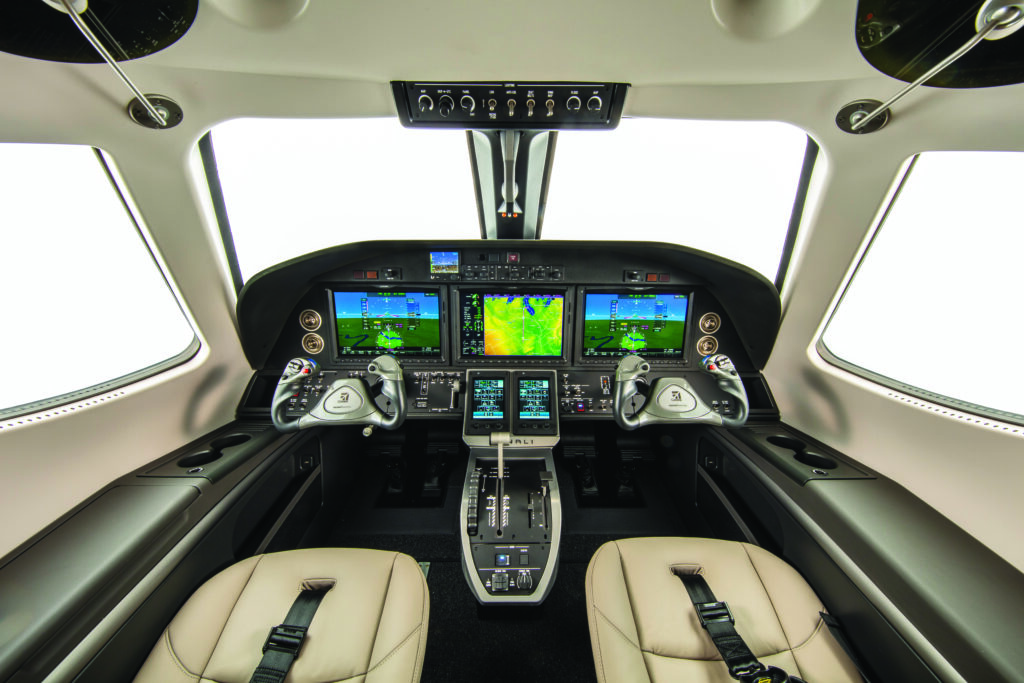
Certification is projected now for later in 2023, with Textron Aviation logging more than 350 flight test hours so far since the flying began. The FADEC-controlled 1,300 shp Catalyst will spin a five-blade composite McCauley prop that spans 105 inches, and help the Denali make its range targets of 1,600 nm in high-speed cruise (with one pilot and four passengers), and a speed of 285 ktas. The Catalyst is set to run on sustainable aviation fuel out of the gate. Full-fuel payload for the new turboprop is predicted to be about 1,100 pounds.
The flight deck features the Garmin G3000 avionics suite with an automatic flight control system and flight management system. Digital engine management will allow for on-condition maintenance and trend monitoring.
The cabin—which offers a front refreshment station as a novel perk— can be set up for six to nine seats, with an optional belted lavatory in the rear.

Daher Kodiak 900
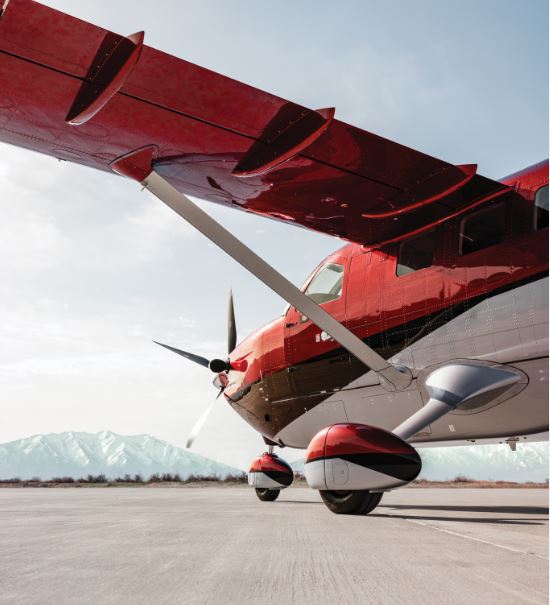
Daher introduced the Kodiak 900 at EAA AirVenture with a new monster of an engine—the biggest PT6 yet, the PT6A-140A—rated at 900 shp. The Kodiak can tap into an extra 150 nominal horsepower throughout its range, making for grand application in the hot and high environments in which the Kodiak 100 has excelled.
And at what speed? According to the company, 210 ktas at 12,000 feet and 58 gph, with an endurance of 4.3 hours with 45 minutes IFR reserve fuel. The five-blade Hartzell prop takes its heritage from the TBM line, but maintains 15.6 inches of ground clearance, critical for rough-field operations. The pairing of engine and prop results in a TBO of 4,000 hours.
As you walk up to the 900, however, it’s not the new engine that you see first—it’s the new lines of the highly faired fuselage and belly. Daher’s engineering team gained many of those extra knots (nearly 30 more at max cruise) by streamlining the Kodiak’s cargo pod. The team also crafted new wheelpants—evocative of the deco age—to trim more drag from the 900’s profile.
Customer feedback drove upgrades inside as well, with an interior that brings to mind a Range Rover more so than a Jeep. In the panel, pilots will find the Garmin G1000 NXi avionics suite, including synthetic vision and weather radar.

Diamond DA50 RG
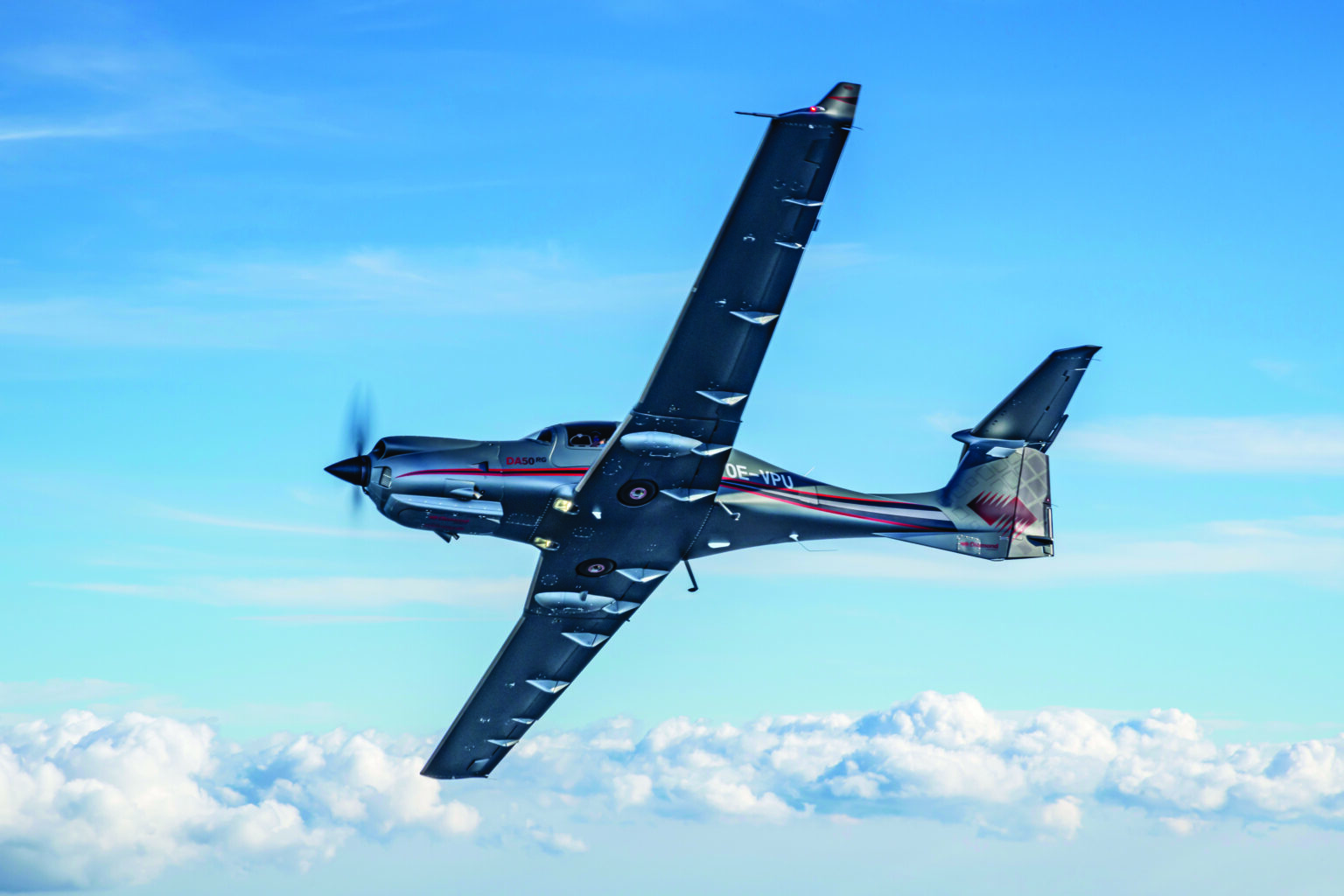
Powered by a 300 hp, FADEC-controlled Continental CD-300 (270 hp maximum continuous power), a six-cylinder, turbo-diesel powerplant, the DA50 RG will operate on jet-A1 at burn rates as low as 9 gph. The maximum range is roughly 750 nm (with a 30-minute reserve) at the 9 gph burn rate. The DA50 RG offers a spacious cabin—among the top in its class—with seating for five and generous baggage capacity.
In the panel, the DA50 RG hosts the Garmin G1000 NXi integrated flight deck with the GFC 700 three-axis autopilot. Options include electric air conditioning, a GCU 476 keypad, and a TKS anti/de-icing system.
The DA50 RG makes a high-speed cruise of 172 ktas (at ISA, 10,000 feet msl and 4,407 pounds). It can climb to its maximum operating altitude of 20,000 feet at a rate of up to 1,050 fpm.
The DA50 RG features a useful load of 1,232 pounds, a takeoff distance (at sea level, over a 50-foot obstacle) of 2,427 feet, and a landing distance of 2,224 feet (again, at sea level, over a 50- foot obstacle), helping it to utilize a wide range of runways.
Tecnam P2010 Gran Lusso
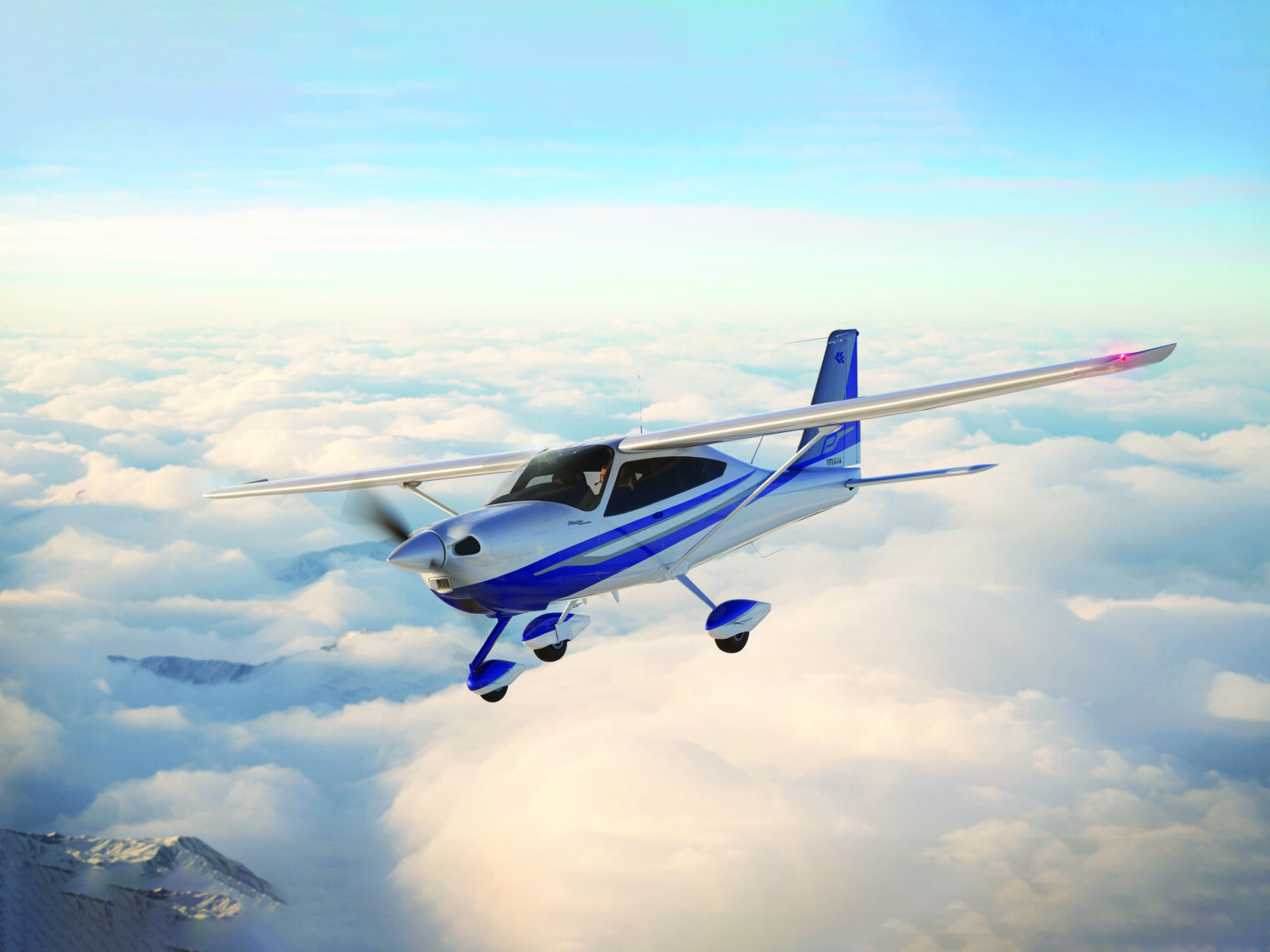
What does the retail price get you? For starters, a new panel layout to house the Garmin G1000 NXi suite, plus the GMC 707 autopilot, and GCU 475 flight management system keypad in the center console. A polished aluminum trim wheel lies there as well, with a dual housing for mobile phones. Tecnam has relocated the electric rudder trim and improved the parking brake, and detailed the wingtips with integrated LED lighting. One feature unique to the P2010 that hasn’t changed? The third passenger door, allowing for easy access to the cabin’s roomy rear seats. Despite an addition to the empty weight of 39 pounds, according to the company, they don’t expect any penalties in performance. The CD-170 sips fuel, and in economy cruise, it can run as low as 5.2 gph average—on either diesel or jet-A. Want to speed things up? For a little more juice, the Gran Lusso will make 140 knots true airspeed.
Piper Aircraft’s ‘Electrified’ PA-28
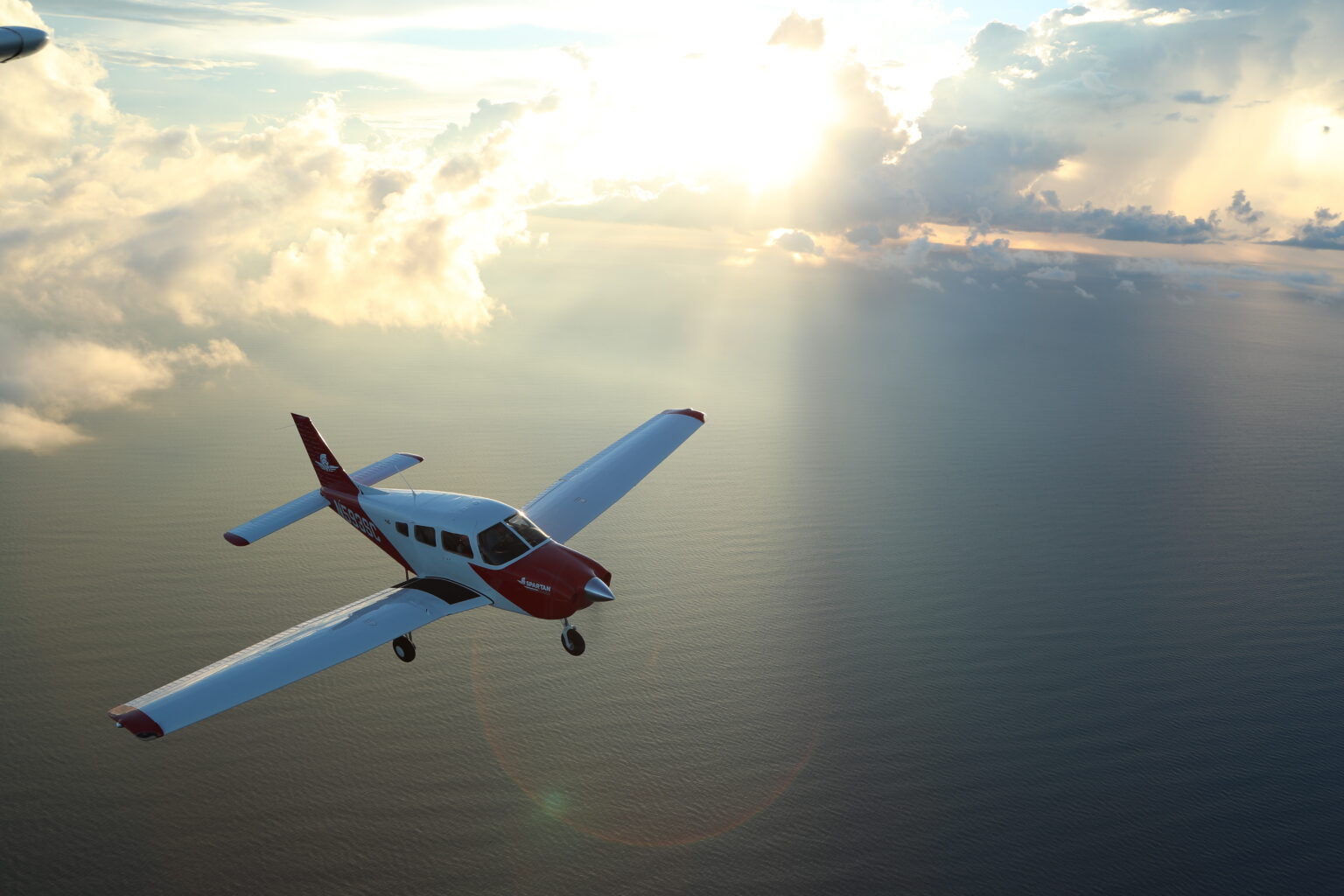
The heart of the conversion pack revolves around Safran’s EngineUS 100 motors, providing a maximum output of 150 kW and an integrated controller. The powertrain’s petite profile is optimized for light aircraft applications such as the Archer. Juice for the motor will be stored in customized battery packs from H55, a Swiss company spun off from Solar Impulse, which will collaborate with CAE on the design to ensure its serviceability in the training environment.
With more than 30,000 PA-28 variants produced—like the Piper Archer TX shown below—the consortium sees an ample market for the STC once it becomes available. The potential to take a proven model, like the Archer, and fly it into a more sustainable future is appealing, though many details remain to be sorted out.
Van’s RV-15

The RV-15 looks to be one of the bigger Vans, with room for baggage and beefy landing gear struts with internal shock absorbers to match. It’s a bid for the backcountry market, according to the company, so it makes sense for the RV-15 to be able to carry more than an RV-4. But not a lot of other specifications were shown, though elements like the baggage door carried dimensions (22 7/16- inches-tall by 19 3/4-inches-wide).
The prototype is being flown with a Dynon’s affiliated-brand Advanced Flight Systems avionics suite and an autopilot, with the control stick coming out of the floor between the pilot’s knees.
A fuel tank was riding shotgun in the right seat for the journey to Oshkosh from the company’s headquarters in Aurora, Oregon.
While Van’s began test flights of the high-wing design in June, it put no timetable on when it will start taking orders—or when it plans to make first deliveries.
What they will say is that the current tailwheel version shown by the prototype will come first, followed by a tricycle-gear version. Ready for the backcountry, fat tires will come as an option as well, depending on where the builder—and eventually, its pilot—wants to take it.
Waco Super YMF-5
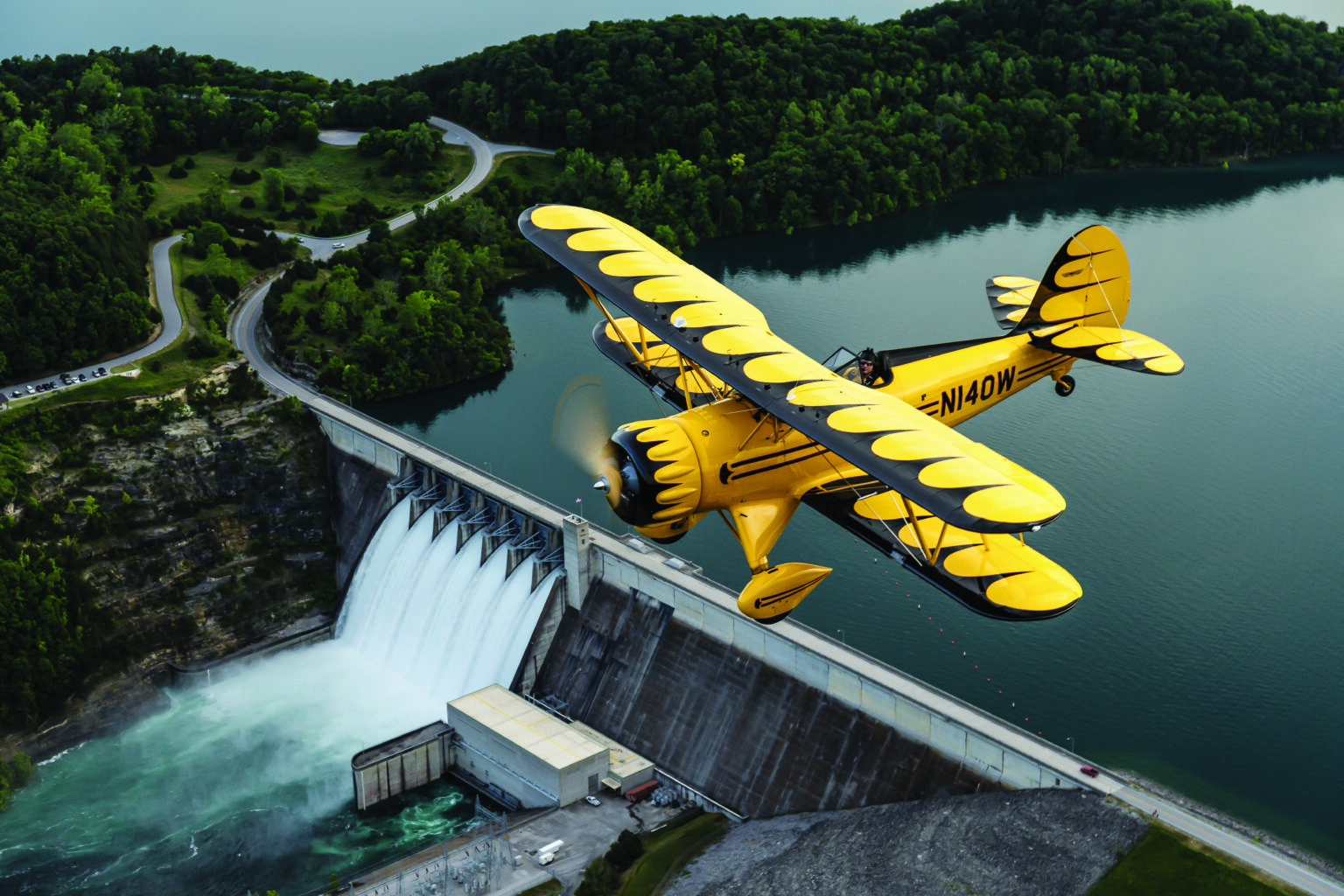
Making a splash at EAA AirVenture this year was the latest version of the legendary WACO YMF-5 biplane—and a real splash, since the model comes with a float option.
The fixed-gear “Super” version marries all of the best features of the original YMF, from the 300 hp Jacobs R755A2M radial engine (overhauled to zero time) to the open cockpits lined with leather, to the modern age, all-weather rain-resistant fabric covering and options for a lot of glass panel up front.
WACOs have always been hand-crafted affairs, and the new versions are no different. However, the future output of the company will benefit from the investments made in quadrupling the manufacturing space at the company’s Battle Creek, Michigan, location. The year the new owners took over, only four units were built. For 2022, WACO’s up to 8 units, and has plans to go to 12 units a year, soon.
If your dream is to lope along the sky at 115 mph (100 knots) or ease through light aerobatics with a +5.2/-2.1 G limit range, the standard YMF-5 may call your name. If you want to customize the airplane with Aerocet 3400 composite construction floats, you can add water landings to your portfolio of fun in a true classic.



